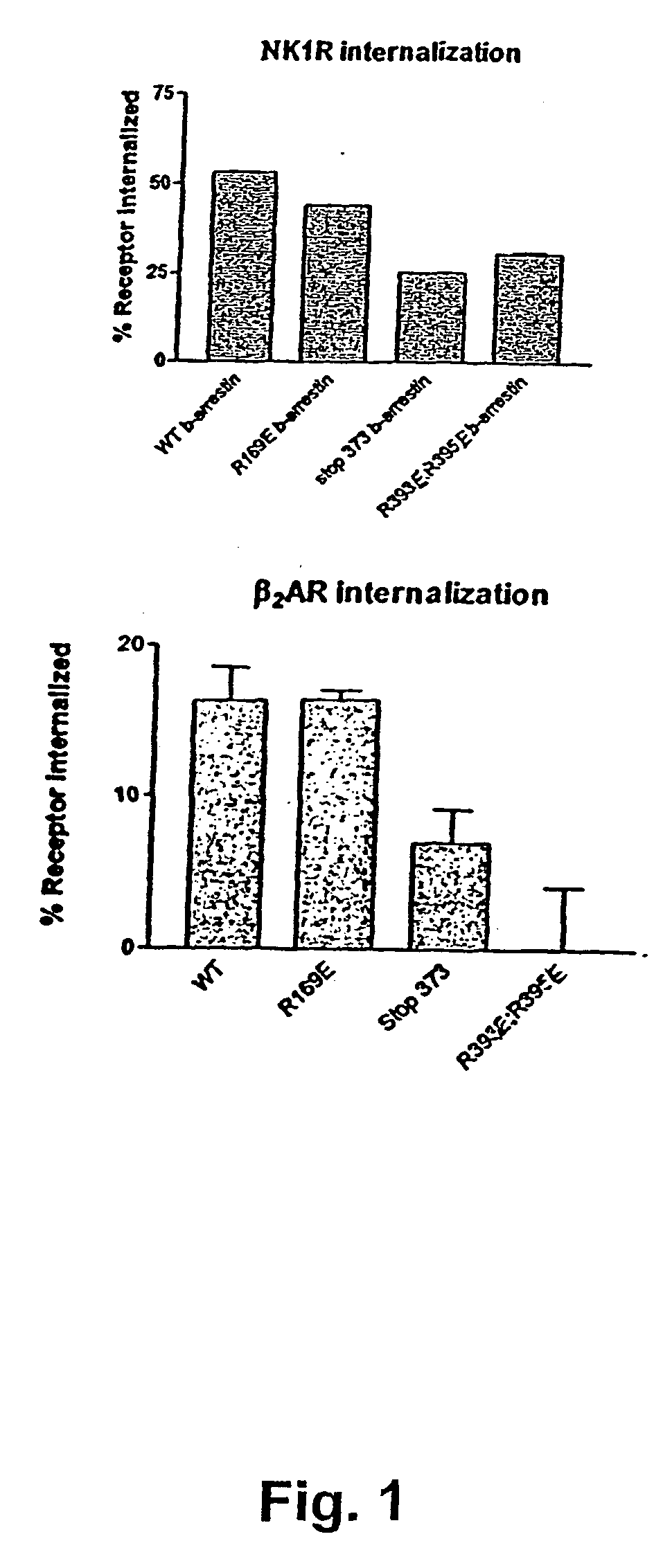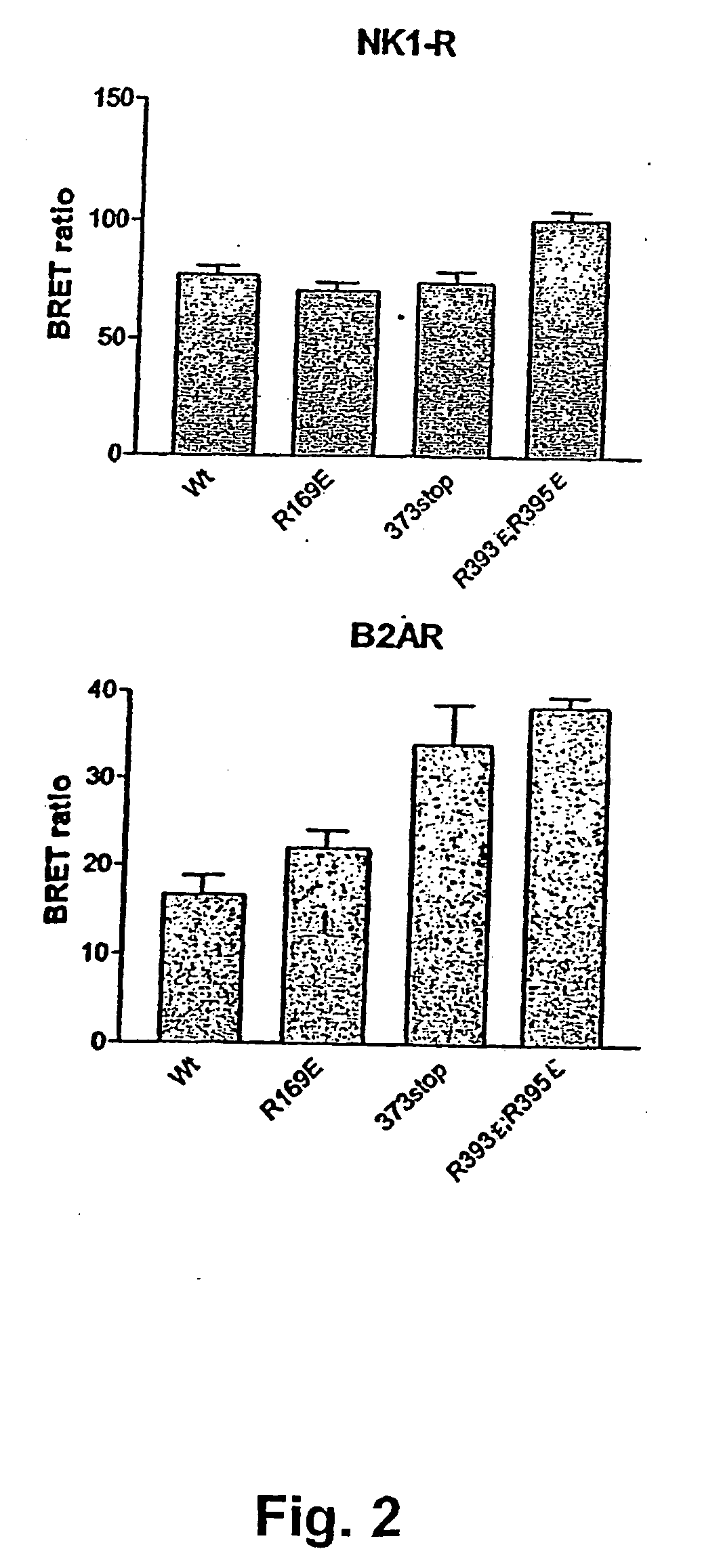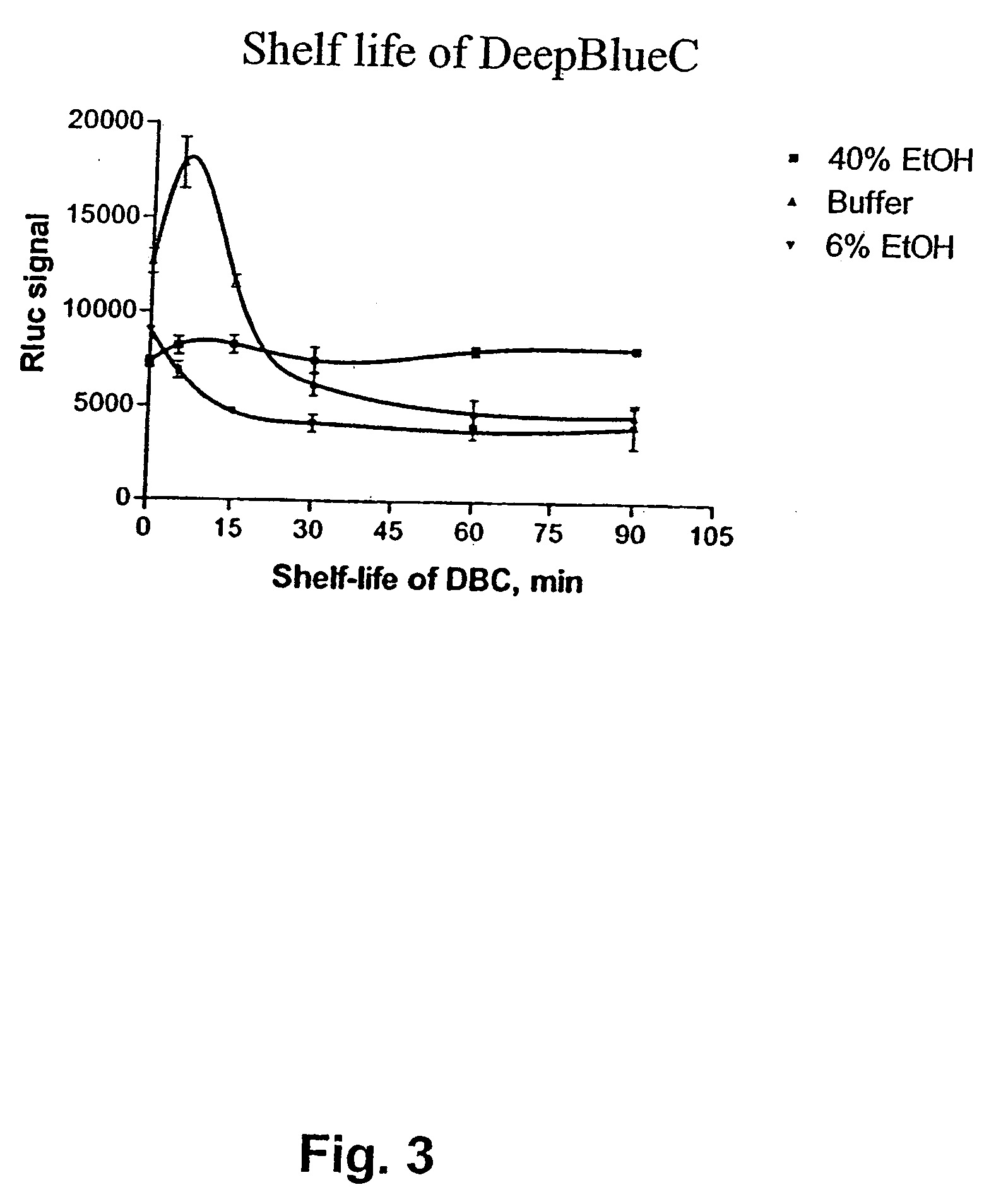Bret assay
a technology of bret and assay, applied in the field of improved bret assay, can solve the problems of relatively weak bret signal and short term, and achieve the effect of preventing precipitation
- Summary
- Abstract
- Description
- Claims
- Application Information
AI Technical Summary
Benefits of technology
Problems solved by technology
Method used
Image
Examples
examples
[0075] NK-1 Receptor Internalization Assays
[0076] COS7 cells in 75 cm2 flask (3×106 cells / flask) were used for transfection. NK-1 / Rluc receptor (2 μg cDNA / flask) was coexpressed together with 6 μg GFP / β-arrestin 2, 6 μg GFP2 / β-arrestin R169E, 6 μg GFP2 / β-arrestin Lys 373 stop or 6 μg GFP2 / β-arrestin R393E, R395E. At the end of transfection period (3-5 hours), cells were washed twice with PBS, trypsinased and plated at a density of 2.5×105 cells per well in 12-well plates. After 48 hours, cells were washed once with assay medium (HEPES-modified DMEM with 0.1% BSA, pH 7.4) and incubated in assay medium for at least 1 hour before being incubated with 125I-labeled SP (30000 cpm / well) in 0.5 ml assay medium 10 min at 37 C. Cells were then transferred onto ice and washed twice with ice-cold PBS. Subsequently, the extracellular receptor-associated ligand was removed by washing once with 1 ml of acid solution (50 mM acetic acid and 150 mM NaCl, pH 2.8) for 12 min. The acid wash was collect...
PUM
 Login to View More
Login to View More Abstract
Description
Claims
Application Information
 Login to View More
Login to View More - R&D
- Intellectual Property
- Life Sciences
- Materials
- Tech Scout
- Unparalleled Data Quality
- Higher Quality Content
- 60% Fewer Hallucinations
Browse by: Latest US Patents, China's latest patents, Technical Efficacy Thesaurus, Application Domain, Technology Topic, Popular Technical Reports.
© 2025 PatSnap. All rights reserved.Legal|Privacy policy|Modern Slavery Act Transparency Statement|Sitemap|About US| Contact US: help@patsnap.com



